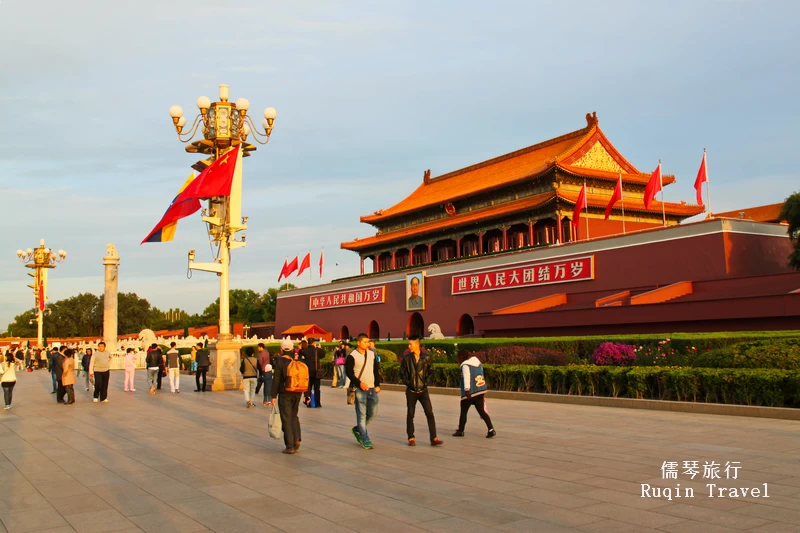Tiananmen Square, a sprawling expanse in the center of Beijing, stands as a symbol of China’s rich history and vibrant culture. This “A Comprehensive Guide to Tiananmen Square” provides you with all you need to know for your trip to Tiananmen Square, ensuring a smooth and enjoyable visit.
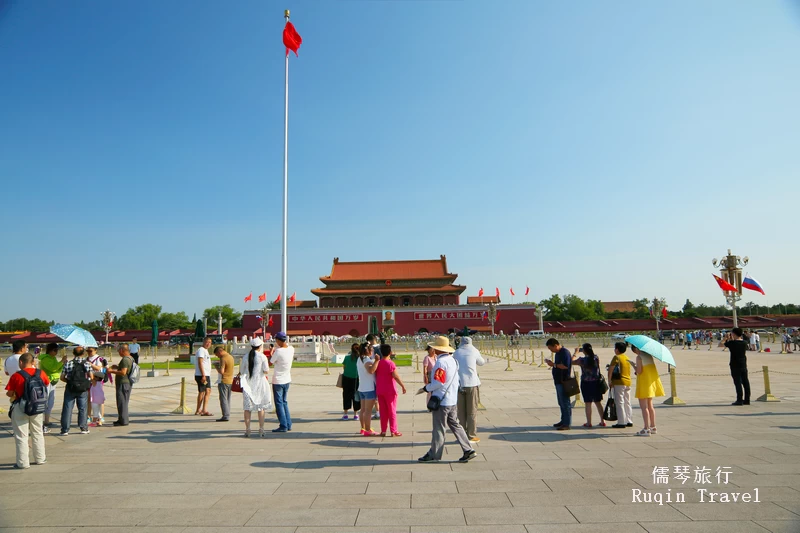
Here, visitors can explore several landmark sites: the imposing Tiananmen Tower, the solemn Monument to the People’s Heroes, the grand Great Hall of the People, and the poignant Chairman Mao Zedong Memorial Hall.
Additionally, witnessing the national flag-raising ceremony offers a uniquely stirring experience, captivating thousands of visitors daily. As a quintessential destination in Beijing, Tiananmen Square is an unmissable stop for anyone seeking to understand the heart and spirit of China.
Best Times to Visit Tiananmen Square
The best time to visit Tiananmen Square largely depends on Beijing’s seasonal weather and the flow of tourists. Generally, spring (April to June) and autumn (September to November) are ideal, offering mild temperatures and clear skies. These seasons strike a perfect balance between comfort and the beauty of the surroundings, with spring’s blossoming flowers and autumn’s golden leaves enhancing the square’s majesty.
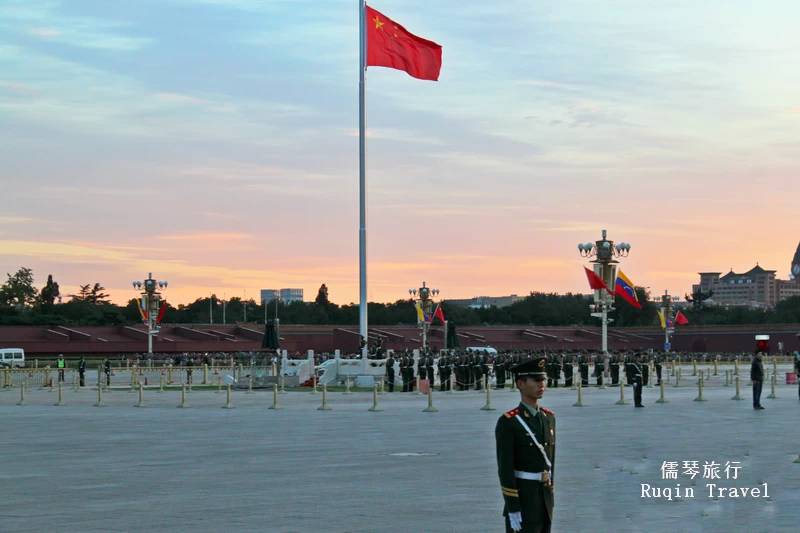
Summer (July to August) brings hot temperatures and a surge in tourist numbers, while winter (December to February) can be quite cold, though less crowded.
For a truly memorable experience, aim to visit during national holidays like National Day (October 1st) or during important events, but be prepared for larger crowds.
Early morning visits, especially to witness the flag-raising ceremony, provide a serene atmosphere, while evenings offer a beautifully lit, quieter experience.
How to Get to Tiananmen Square
Reaching Tiananmen Square is convenient with Beijing’s efficient public transport system. For subway users, two primary lines serve the area:
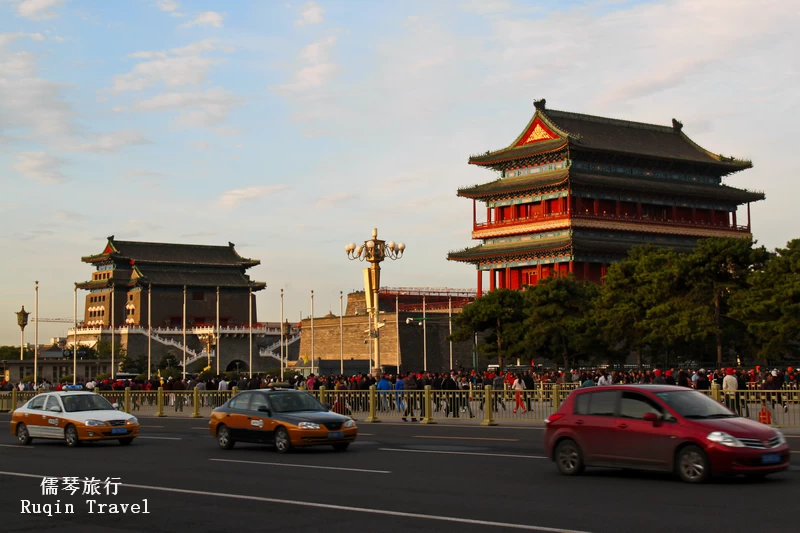
- Subway Line 1: Alight at either Tiananmen East or Tiananmen West stations. From here, the square is a short walk away, offering a glimpse of the city’s bustling streets.
- Subway Line 2: Exit at Qianmen Station using Exit A or B, then head north. This route passes through historic areas, adding to the sightseeing experience.
For those preferring buses, multiple routes lead directly to the square:
- Routes to West Tiananmen: Buses 1, 5, 52, and Sightseeing Lines 1 and 2.
- Routes to East Tiananmen: Buses 1, 2, 52, 82, 120, Sightseeing Lines 1 and 2.
- Routes to East Tiananmen Square: Buses 2, 5, 120, Sightseeing Lines 1 and 2.
- Routes to West Tiananmen Square: Buses 2, 120, Sightseeing Lines 1 and 2.
- Routes to Qianmen East Station: Buses 22, 82, 137, 599. From here, a short walk north leads to the square.
While navigating, consider using a Beijing transit app for real-time updates and route planning. Also, carrying a map or having one on your smartphone can be invaluable for first-time visitors.
Entrance and Reservation
Visiting Tiananmen Square itself is free, but accessing certain attractions like the Tiananmen Tower requires a fee of CNY 15. As of 2021, visitors must book their visit in advance, a policy that applies to both individuals and groups. This measure aims to enhance visitor experience and maintain order, reflecting a broader trend in China’s tourism industry of advanced reservations, especially important in the context of COVID-19 prevention.
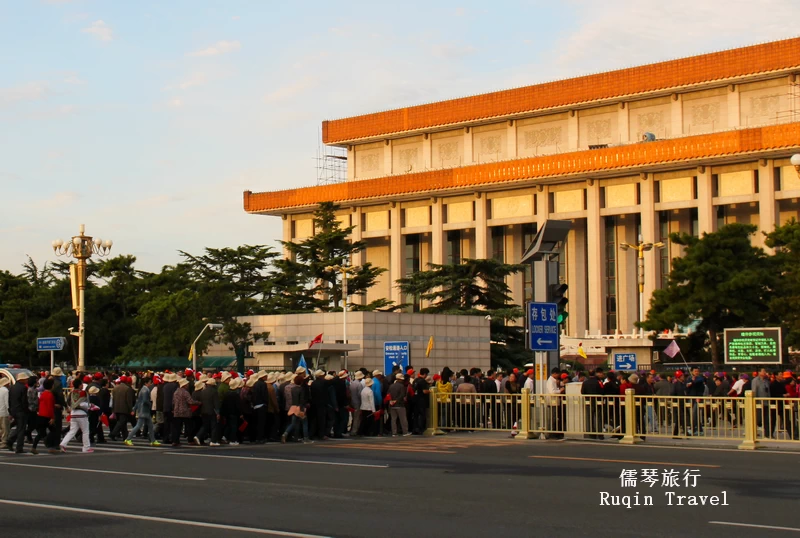
Reservations can be made for up to 10 days in advance through several channels:
- WeChat Mini-Programs: ‘Tiananmen Square Reservation Service’ and ‘Jingchengzhiyue’.
- Mobile Applications: ‘Beijing Tong’, ‘Beijing Daily’, and BRTV.
- Official Website: To book your entrance, please visit the ‘Tiananmen Square Reservation Service Section‘ on the Tiananmen Management Committee’s website here.
In addition, you have the opportunity to visit Tiananmen Square on the same day without requiring an additional ticket, provided you have successfully reserved entry to any of the following attractions:
- Chairman Mao Memorial Hall
- National Museum of China
- The Forbidden City
- Zhongshan Park
- Beijing Workers’ Culture Palace
Whether in the morning, afternoon, or during the unique flag-lowering ceremony, you are welcome to wander around the square as long as these attractions are open.
For an added memorable experience, consider witnessing the flag-raising ceremony at Tiananmen Square. Please note, this requires a separate, advance booking specifically for the “flag-raising” time slot.
For those who find digital platforms challenging, such as the elderly or those without access to smart devices, assistance is available from friends, relatives, or on-site staff.
Visitors can choose from four time-slots: the flag-raising period (early morning), morning, afternoon, and the flag-lowering period (evening). While there is currently no cap on the number of visitors, the authorities may adjust this based on pandemic situations. Note that a reservation does not exempt one from security checks, which are mandatory for entry.
For further assistance or inquiries about reservations, visitors can call 010-86409123 or the Beijing citizens’ hotline at 010-12345. The WeChat official account ‘Beijing 12345’ is also available for more information.
Attractions on and around Tiananmen Square
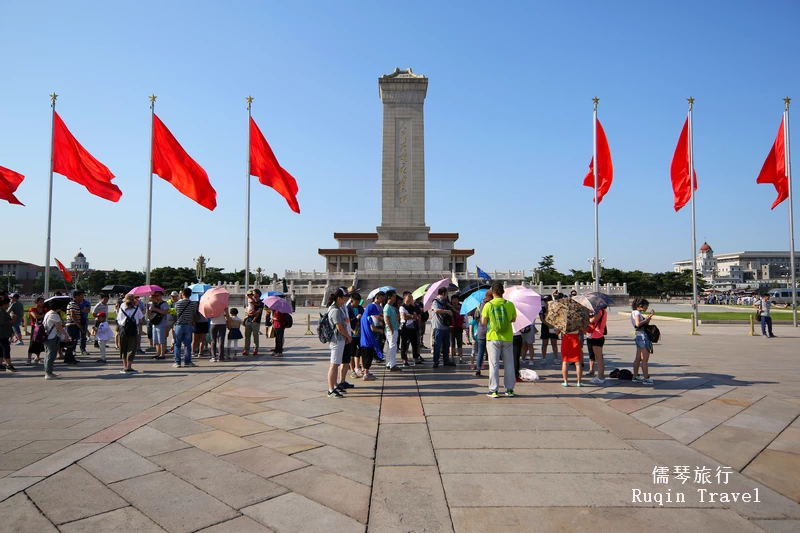
- Memorial Hall of Chairman Mao: Located on the square’s south side, this hall is a place of deep respect and reflection. It is divided into three sections, with the central one housing Chairman Mao’s body in a crystal coffin, surrounded by an array of fresh flowers. The hall’s historical significance dates back to the times of imperial declarations, exclusively accessible to the royalty and aristocracy until the end of the feudal era in 1911.
- Monument to the People’s Heroes: Situated at the square’s center, this imposing granite monument, erected in 1952, stands as China’s largest. Inscribed with Chairman Mao’s words “The People’s Heroes are Immortal,” it features eight large relief sculptures depicting pivotal moments in modern Chinese history. Its simple yet elegant white marble railings add to its solemn beauty.
- Tiananmen Tower: At the square’s northern end, the Tiananmen Tower, originally built in 1417 during the Ming Dynasty, marks the entrance to the Forbidden City. It’s a symbol of China’s historical depth and architectural grandeur.
- Great Hall of the People: Located to the west, this impressive building, constructed in 1959, hosts the National People’s Congress meetings and various political events. Visitors can admire its twelve marble posts, opulent Central Hall, vast Great Auditorium seating 10,000, and the expansive Banqueting Hall with 5,000 seats.
- China National Museum: To the east, this museum, established in 2003, combines the Chinese History Museum and the Chinese Revolutionary Museum. It presents an extensive collection of artifacts and exhibits, showcasing China’s long history and culture, and the development of modern China.
- Flag-Raising Ceremony: Witnessing the raising of the Five-Star Red Flag, China’s national flag, is a must-do. This early morning event draws large crowds, so arriving before sunrise is advised. The viewing stands by Tiananmen Tower offer a great vantage point for this patriotic ceremony.
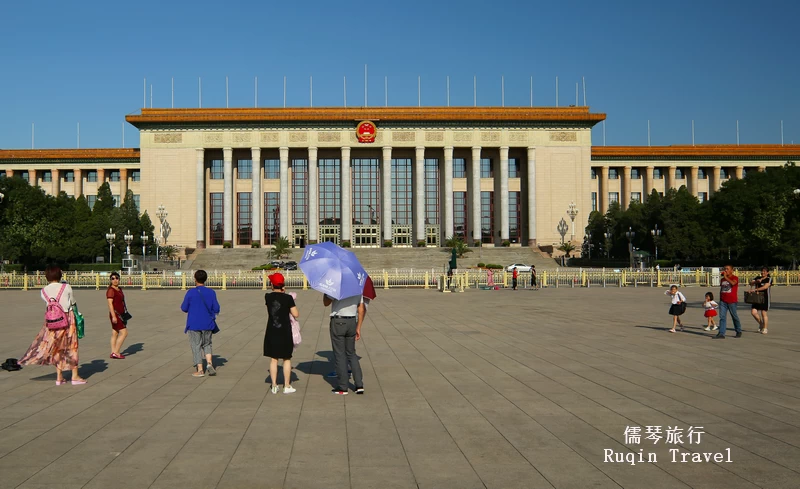
Nearby Attractions
The area surrounding Tiananmen Square is rich with historical and cultural sites, each offering a unique glimpse into Beijing’s past and present:
- Forbidden City: Just north of Tiananmen Tower, the Forbidden City is an expansive palace complex that served as the imperial palace for centuries. Its stunning architecture and vast collection of artifacts make it a must-visit.
- China Railway Museum (Zheng Yang Gate Branch): Located southeast of the square, this museum showcases the evolution of China’s railway system through fascinating exhibits.
- Beijing Planning Exhibition Hall: Also to the southeast, this hall offers insights into Beijing’s development history and future urban planning, featuring detailed models and interactive displays.
- Dongjiaomin and Xijiaomin Lanes: These two traditional Hutongs near the square provide a glimpse into the old Beijing lifestyle, with their narrow lanes and historic buildings.
- Qianmen Street: South of the square, this popular shopping area is known for its ancient gate tower and bustling marketplace, offering a mix of traditional and modern shopping experiences.
- Lao She Teahouse: Southwest of the square, this cultural teahouse offers a Beijing-style experience, complete with performances and local teas.

